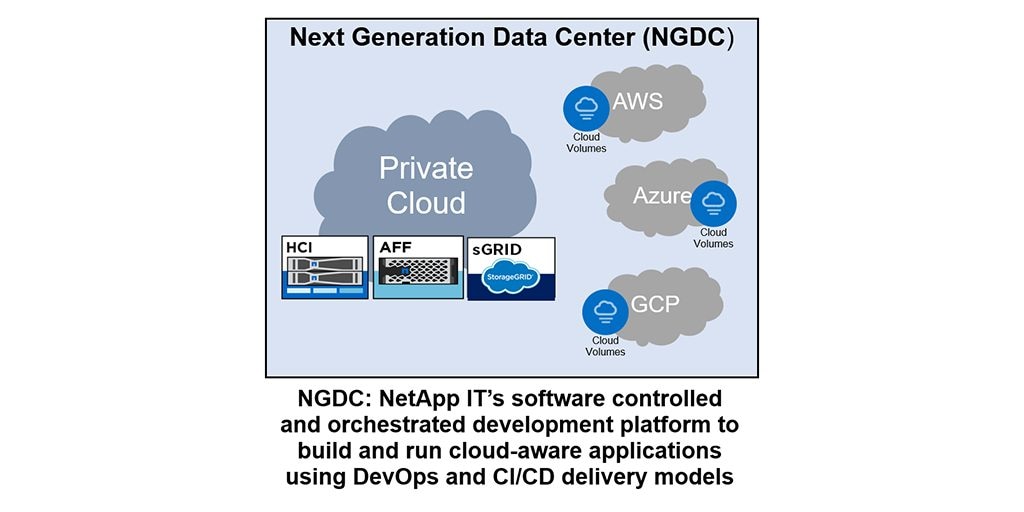Cloud-Friendly HCI, AFF and StorageGRID Perfect for NetApp’s Private Cloud


Gopi Sirineni
One of the main priorities for our IT shop in 2019 is to deliver rapid, frequent business software capabilities through automation and cloud technologies. In a recent NetApp IT eBook called Building A Cloud-Aware Enterprise, we shared the vision of our Next Generation Data Center (NGDC) as a software-controlled and orchestrated development platform to build and run cloud-aware applications using DevOps and CI/CD delivery models.
The goal of the NGDC is to track and manage cloud costs with visibility across our multi-cloud enterprise. We will focus on taking advantage of the elastic, burstable capability of the public cloud with its variable cost model, or the fixed cost structure of our private cloud. Either option requires dial tone-like infrastructure that is scalable and supports microservices and containers.

For our private cloud, we chose three NetApp technologies that met our requirements and are controlled and orchestrated through software.
- NetApp Hyper Converged Infrastructure (HCI) runs container-based technologies like Kubernetes and Docker and gives the containers exactly what they need: a little compute, a little memory and a little storage. It operates at a fixed cost and provides the proper compute resources and the ability to incorporate an API-controlled technology for storage.
- NetApp StorageGRID as the repository for object storage use. It is perfect for unstructured data that sprawls, may be retained forever, is rarely updated, and is meant to be accessed by multiple application services across geographical boundaries. Cloud-aware applications are inherently stateless, so they should take advantage of a stateless storage mechanism.
- NetApp All Flash FAS (AFF) acts as a stateful (NFS, iSCSI) storage platform for our databases and high-performance workloads.
NetApp also leans on tools like RedHat Ansible to automate software provisioning, configuration management, and application deployment. To automate their storage configuration tasks, the team relies on NetApp Ansible modules for ONTAP, Element OS and E-Series. For example, by using Ansible ONTAP modules they have reduced Day 0 build times from a 2-day manual process to an automated, 10-minute process (read more here).
Ultimately, what we are accomplishing with our NGDC platform for DevOps is to rapidly deliver application changes at the speed of business change; NetApp technologies make this possible. Our NGDC architecture includes not only the foundation of our private cloud moving forward, but the opportunity to use the same automated orchestration to deploy resources or workloads into AWS, Azure, Google Cloud or any other public cloud provider. We want to automate services—regardless of the cloud provider—so our developers can focus on writing code and releasing application changes seamlessly using our NGDC DevOps platform.
The NetApp-on-NetApp blog series features advice from subject matter experts from NetApp IT who share their real-world experiences using NetApp’s industry-leading data management solutions to support business goals. Want to learn more about the program? Visit www.NetAppIT.com.
Gopi Sirineni
As Senior Manager for Cloud and Compute Services, Gopi is responsible for designing, implementing, and provisioning both cloud (private and public) and compute infrastructure and services in support of NetApp’s IT strategy. His role includes advancing the cloud eco-system and promoting a culture of technical excellence. Gopi previously managed email infrastructure as part of the NetApp End User Services team. Before joining NetApp in 2006, he worked in various IT positions at Nokia and Visa.